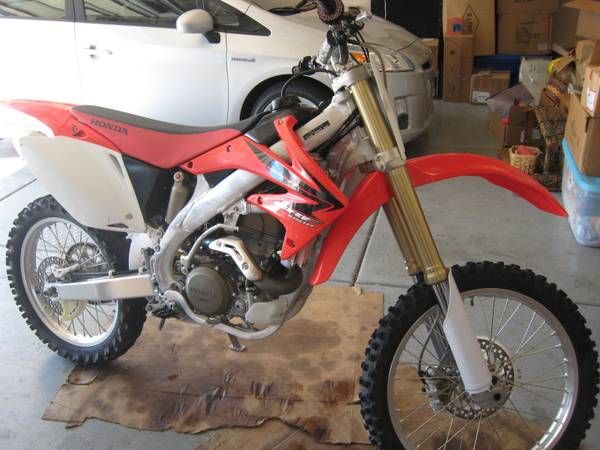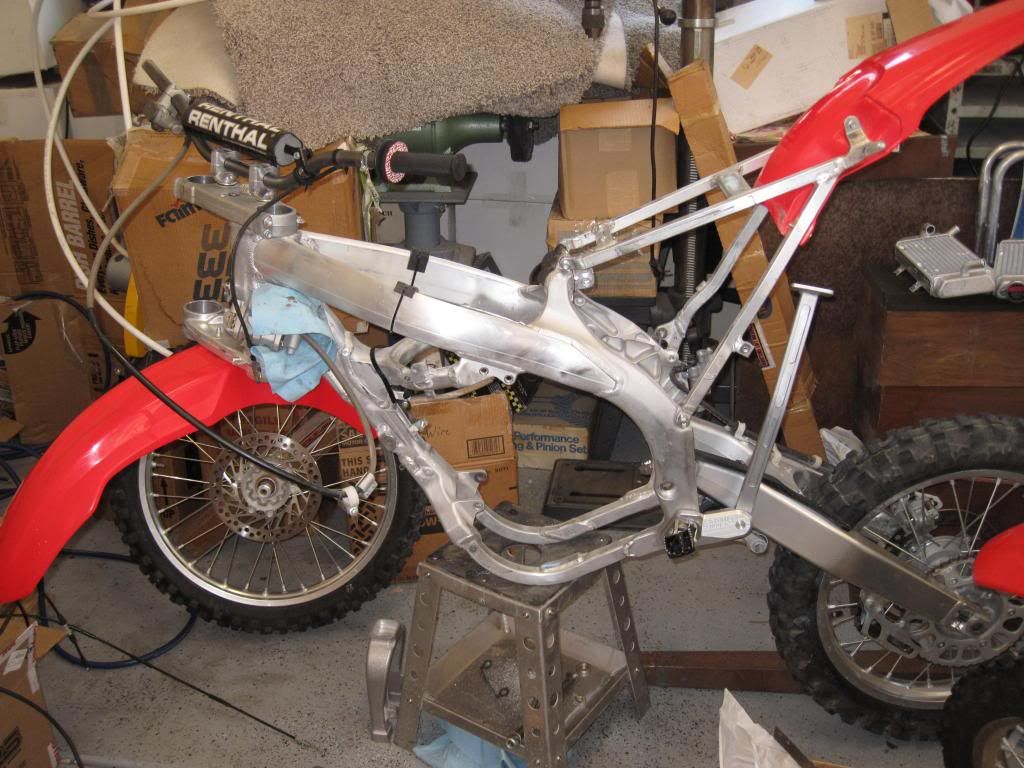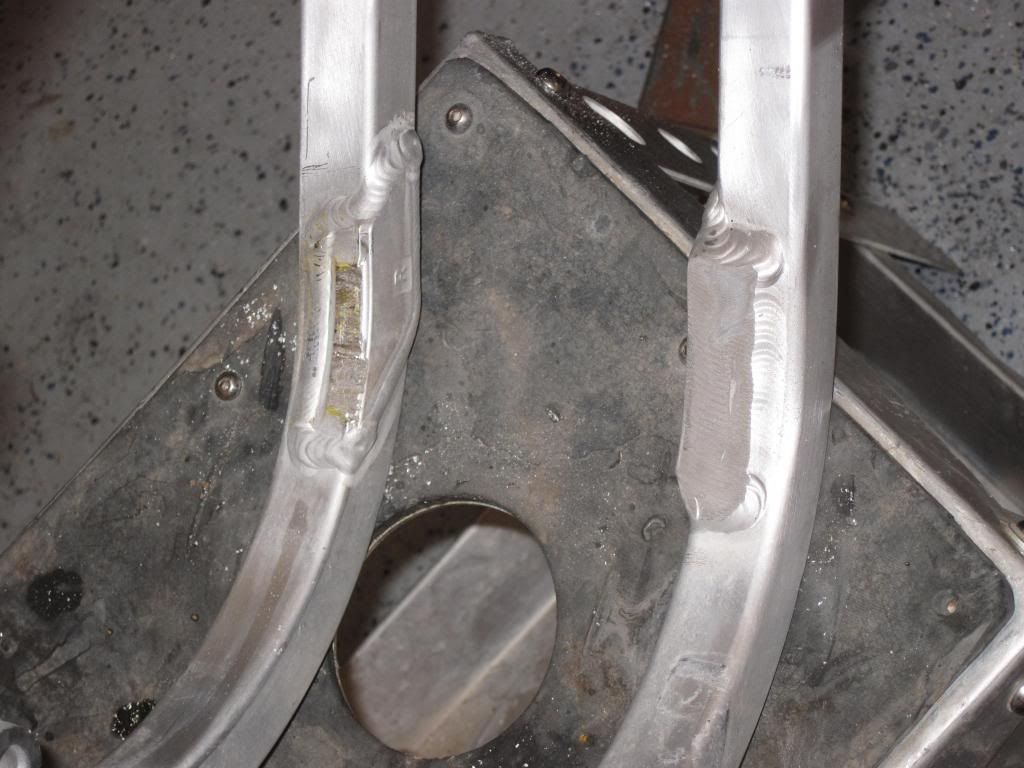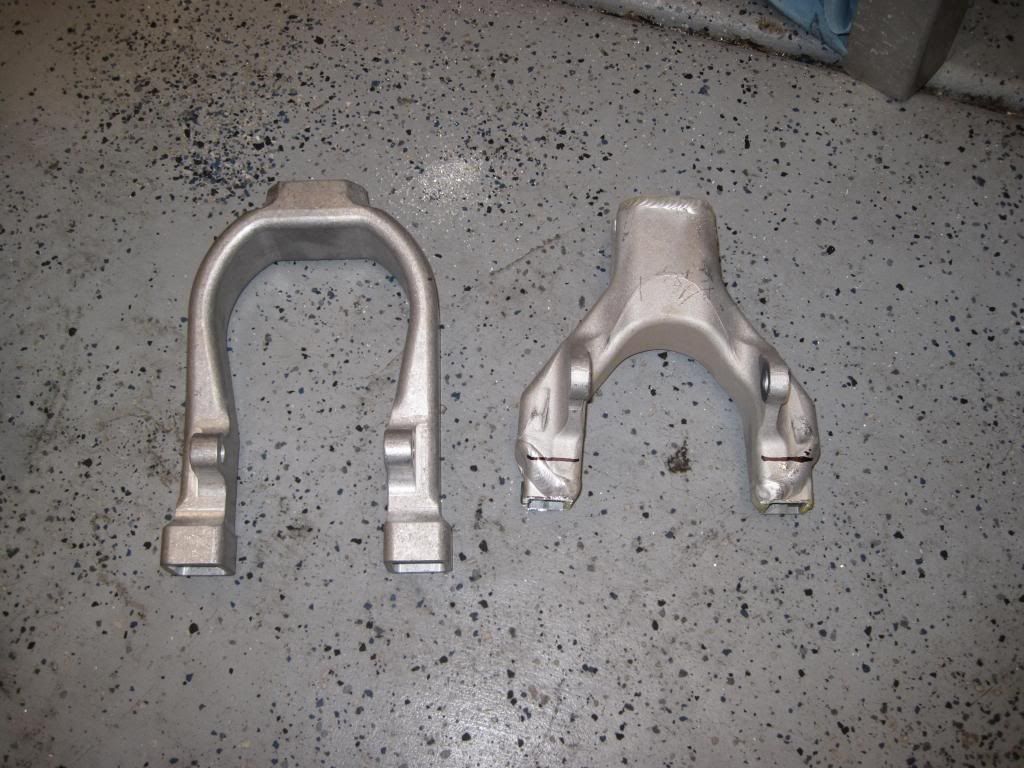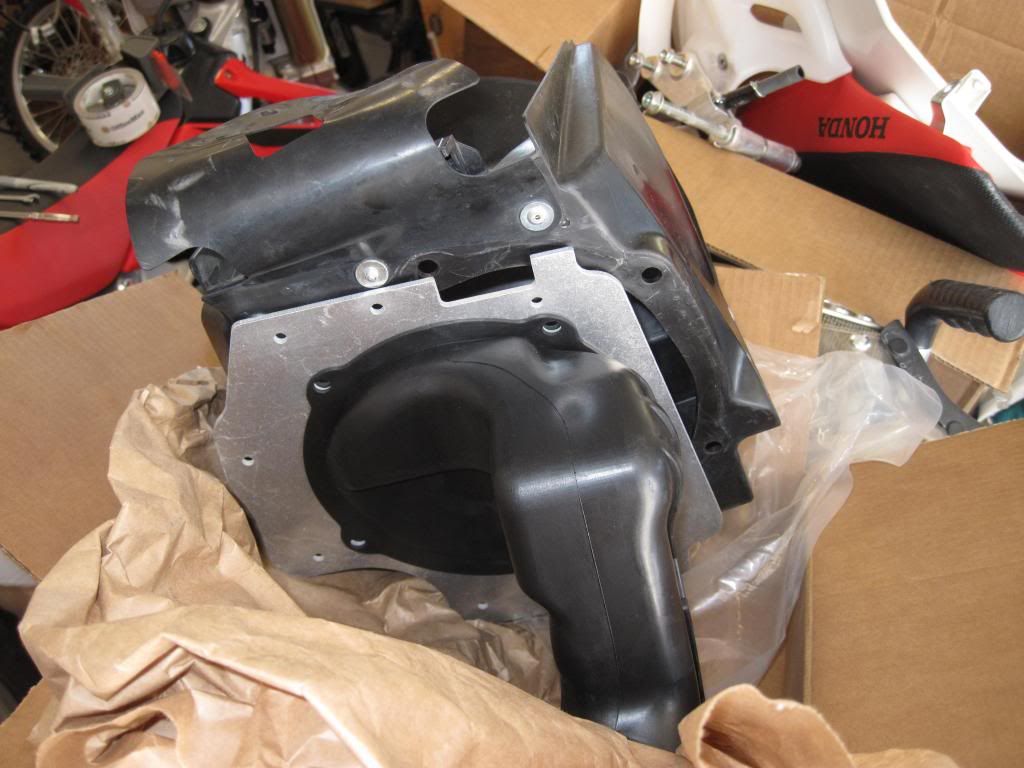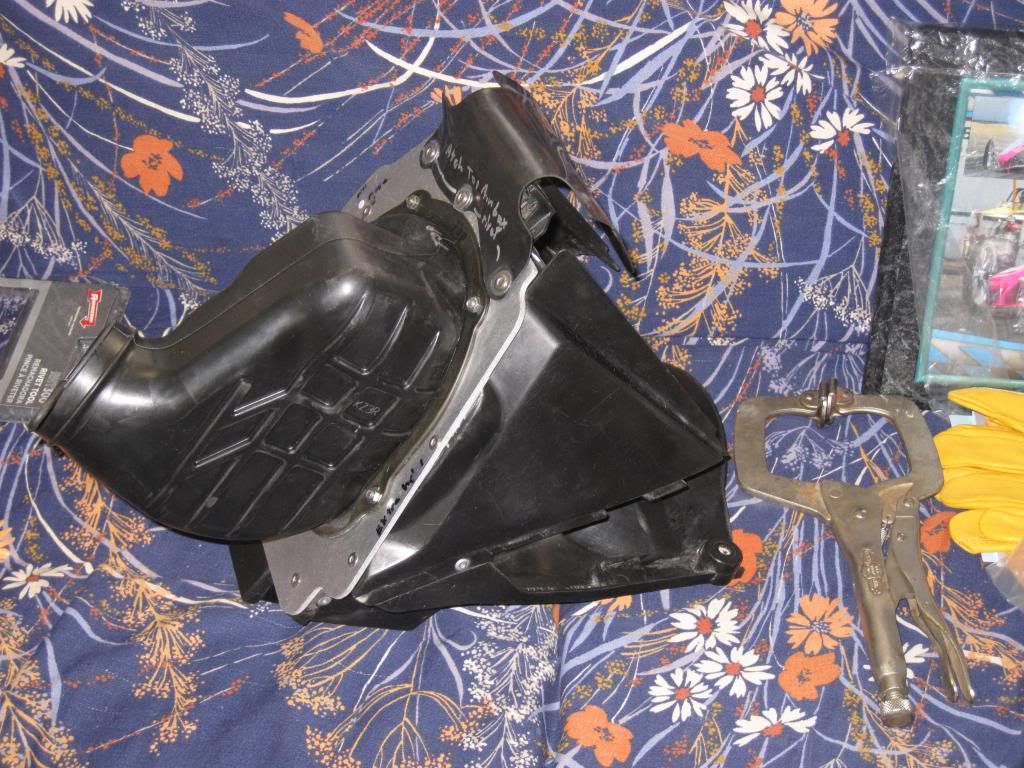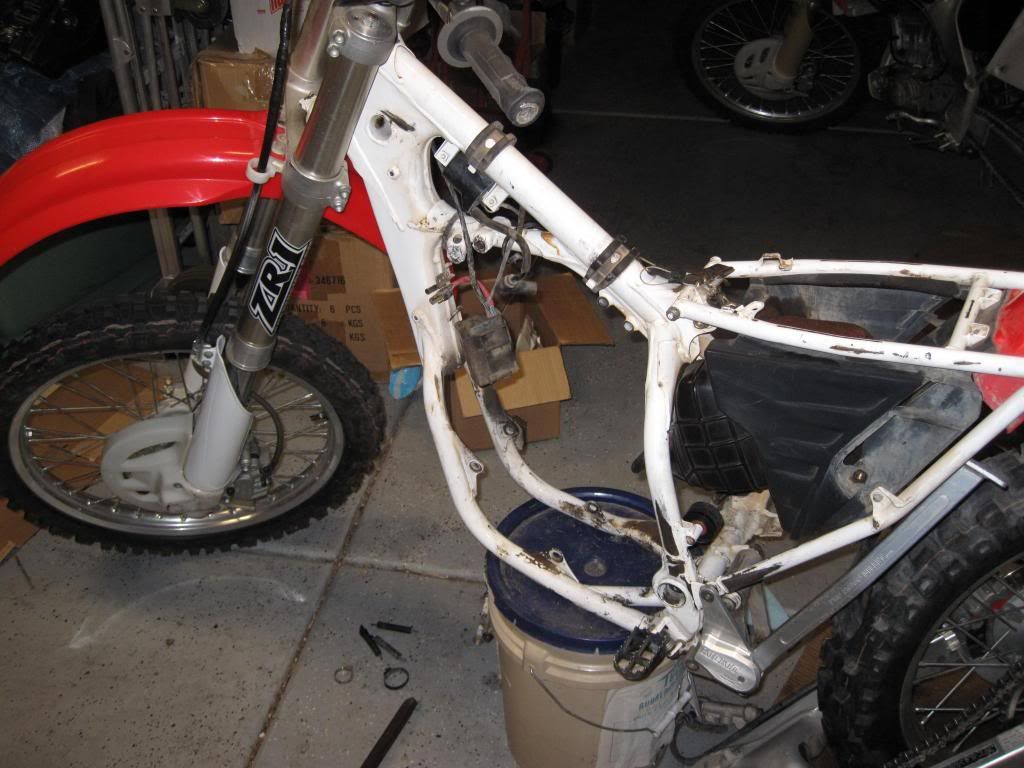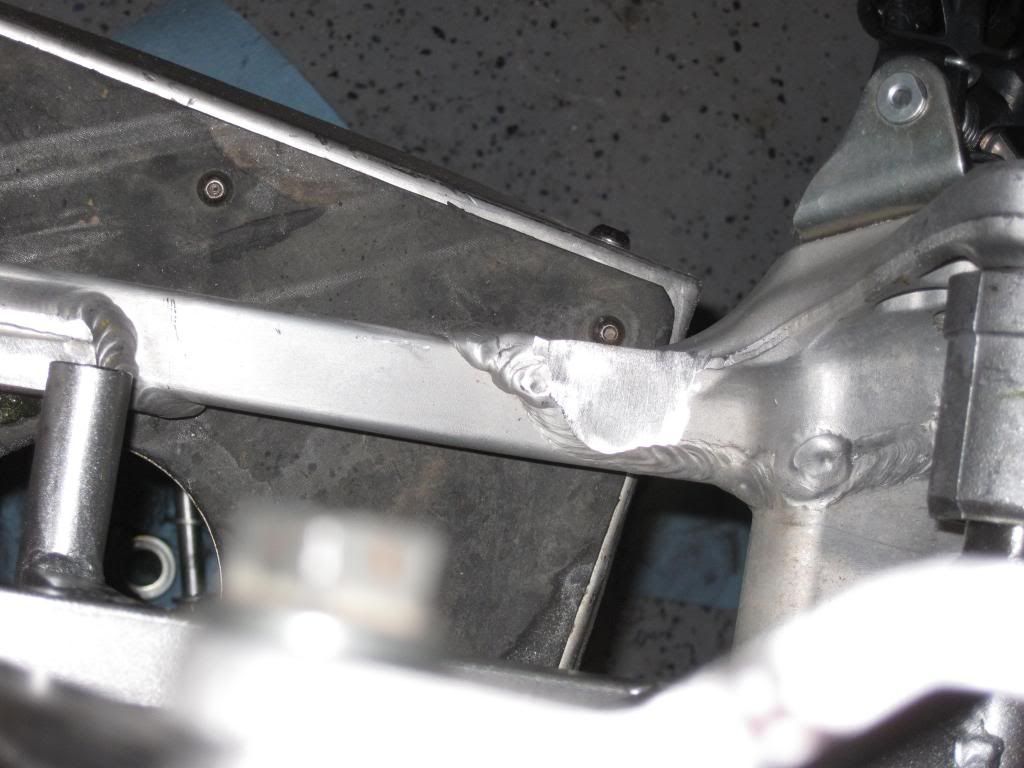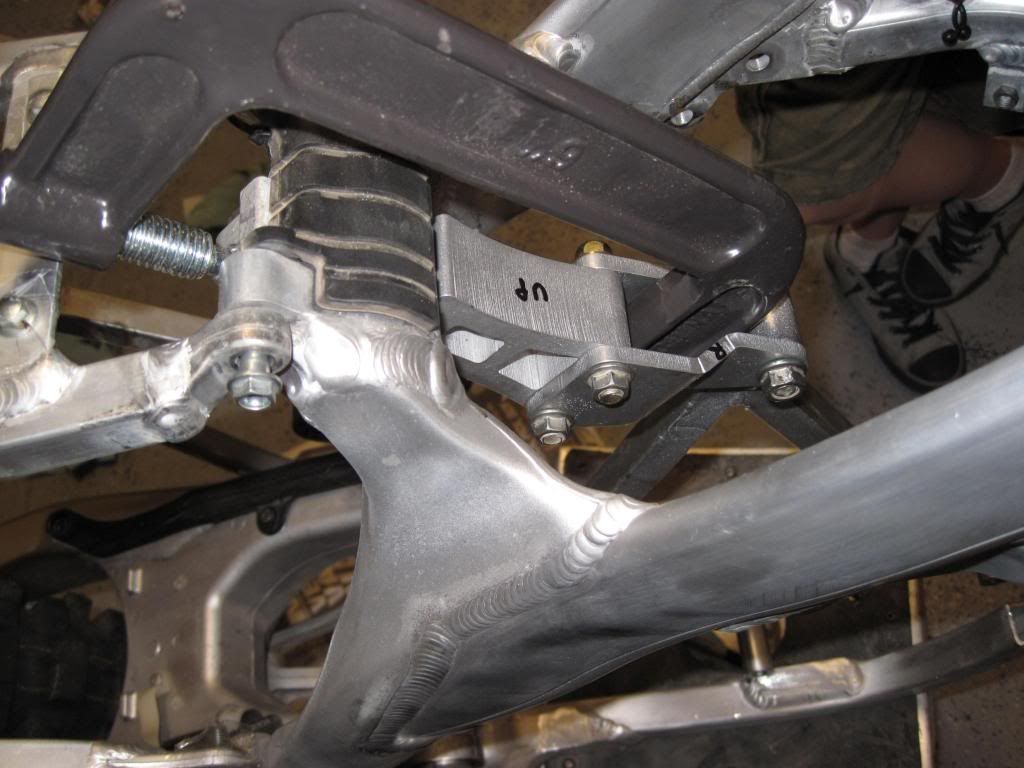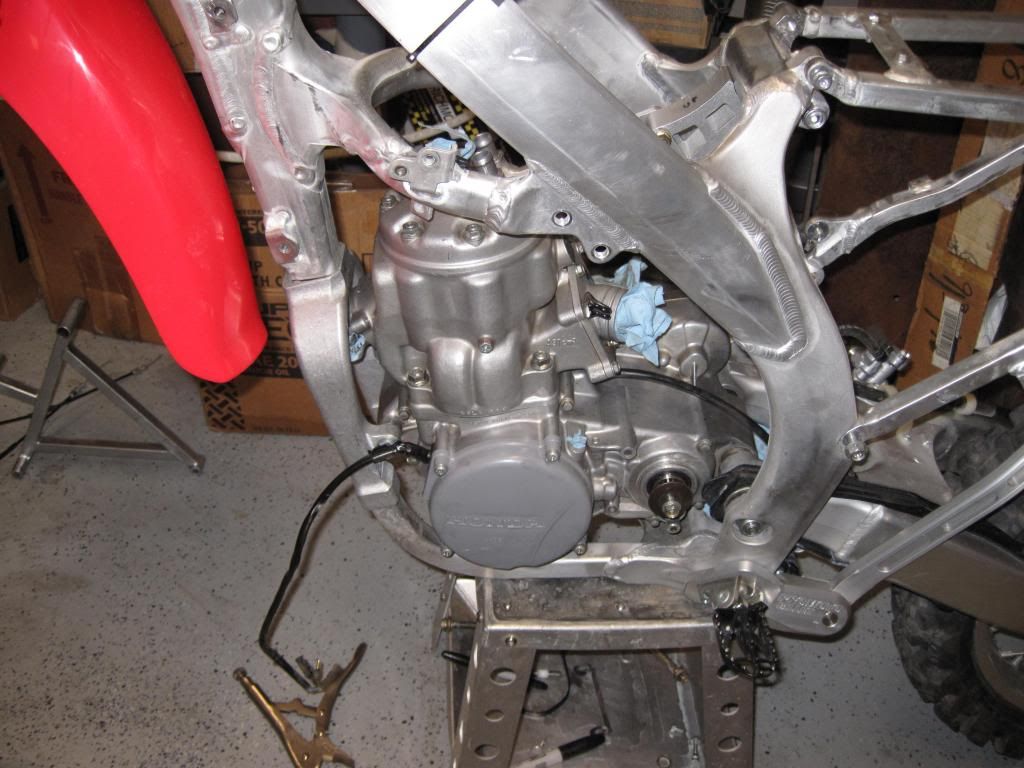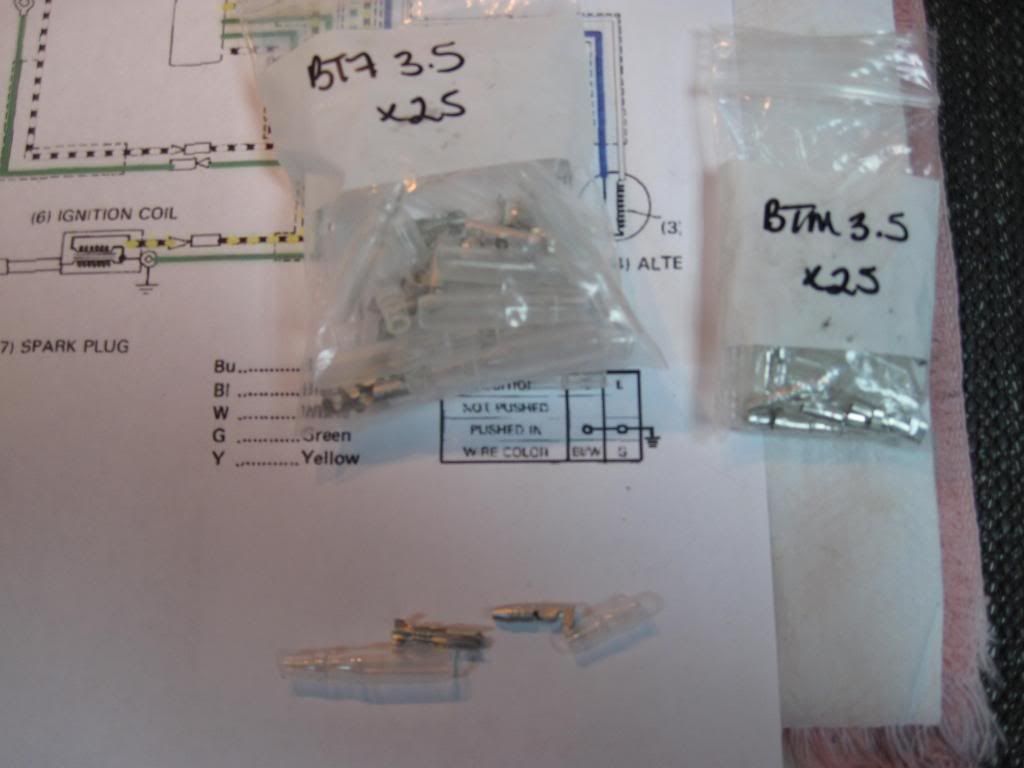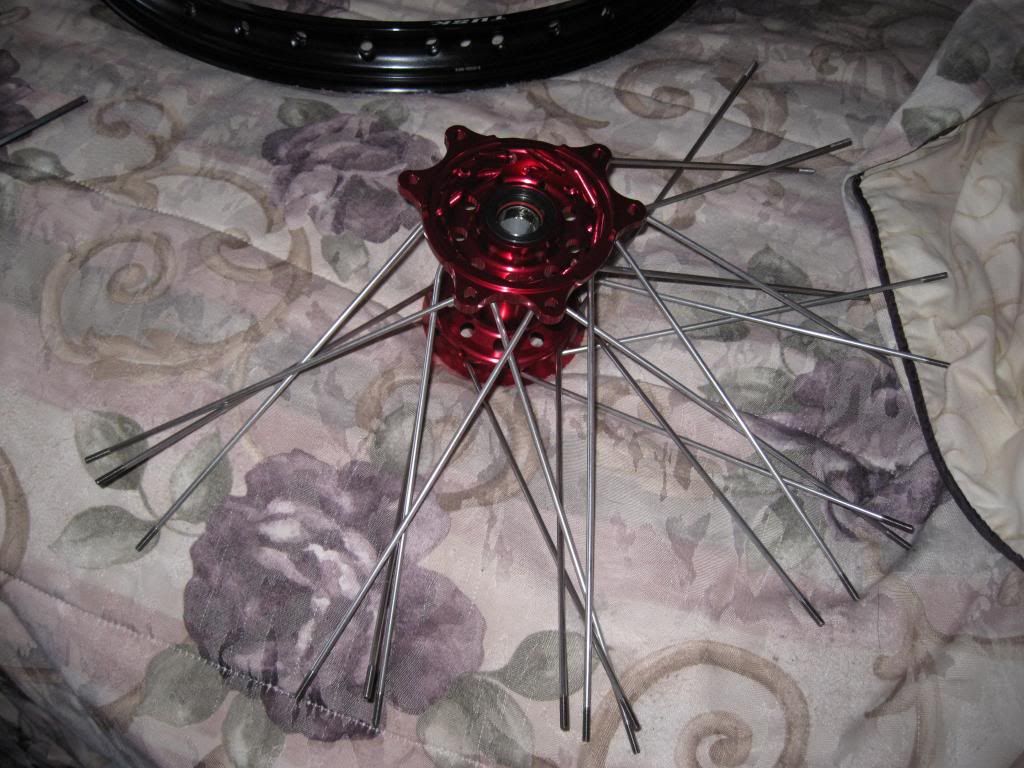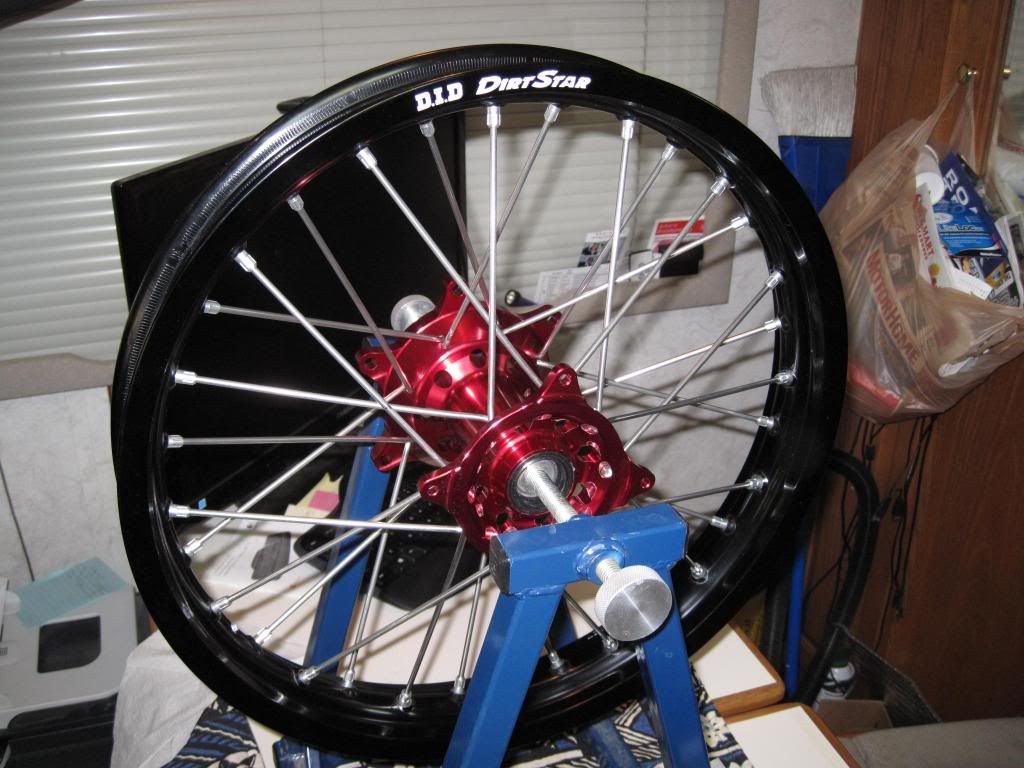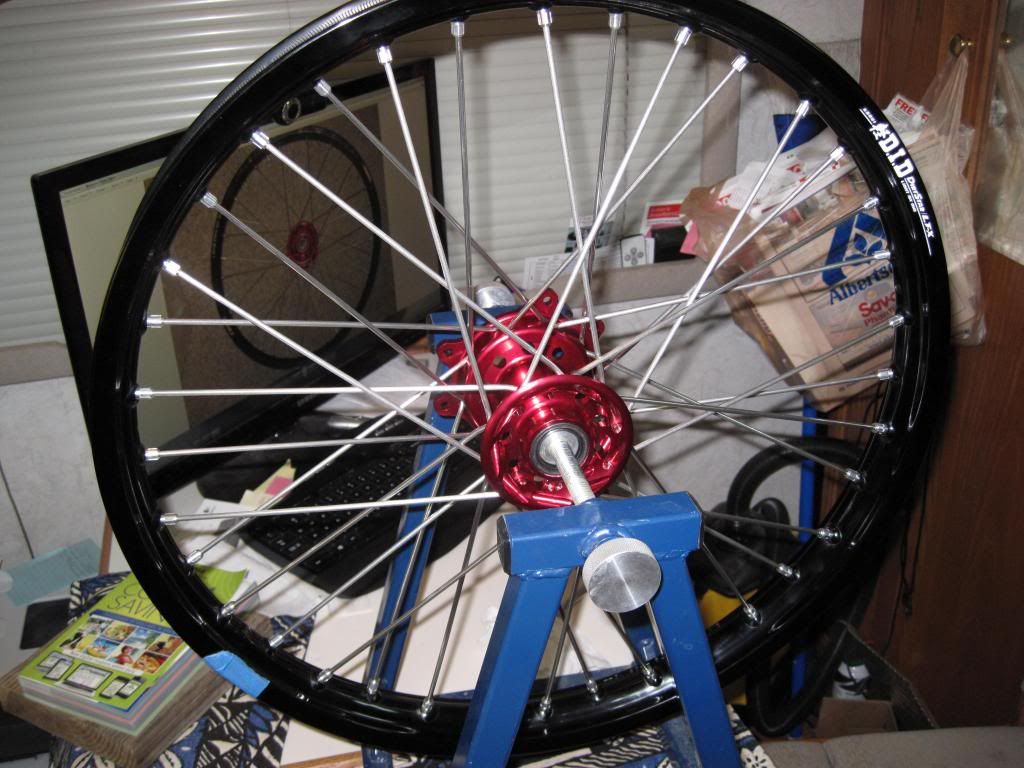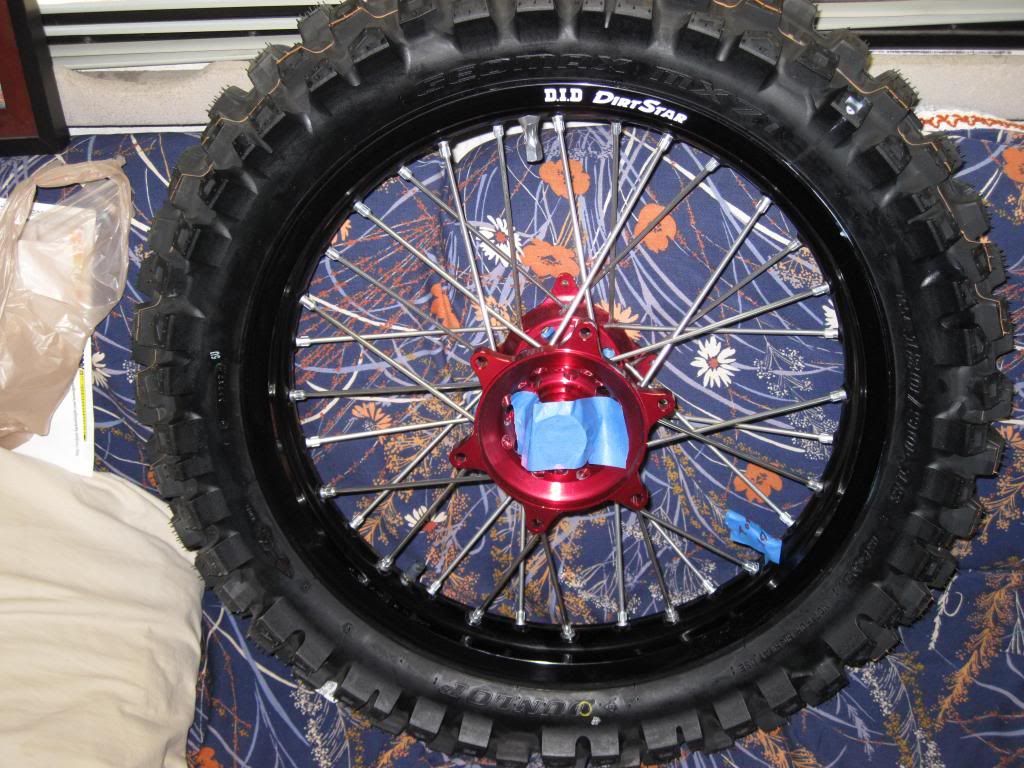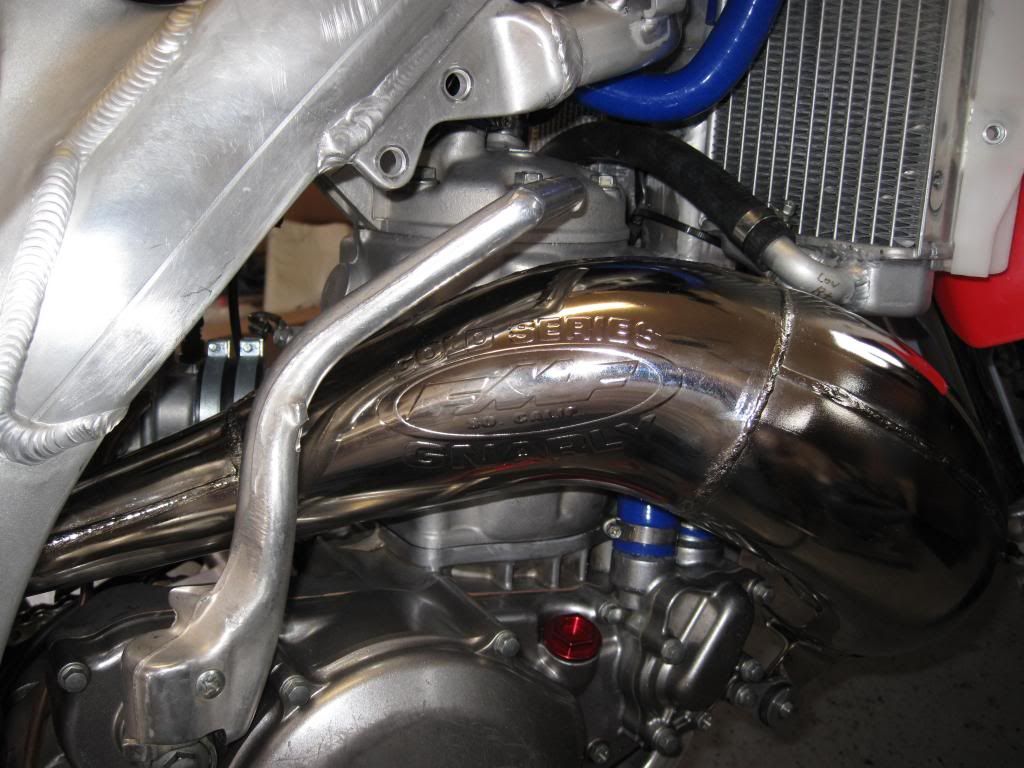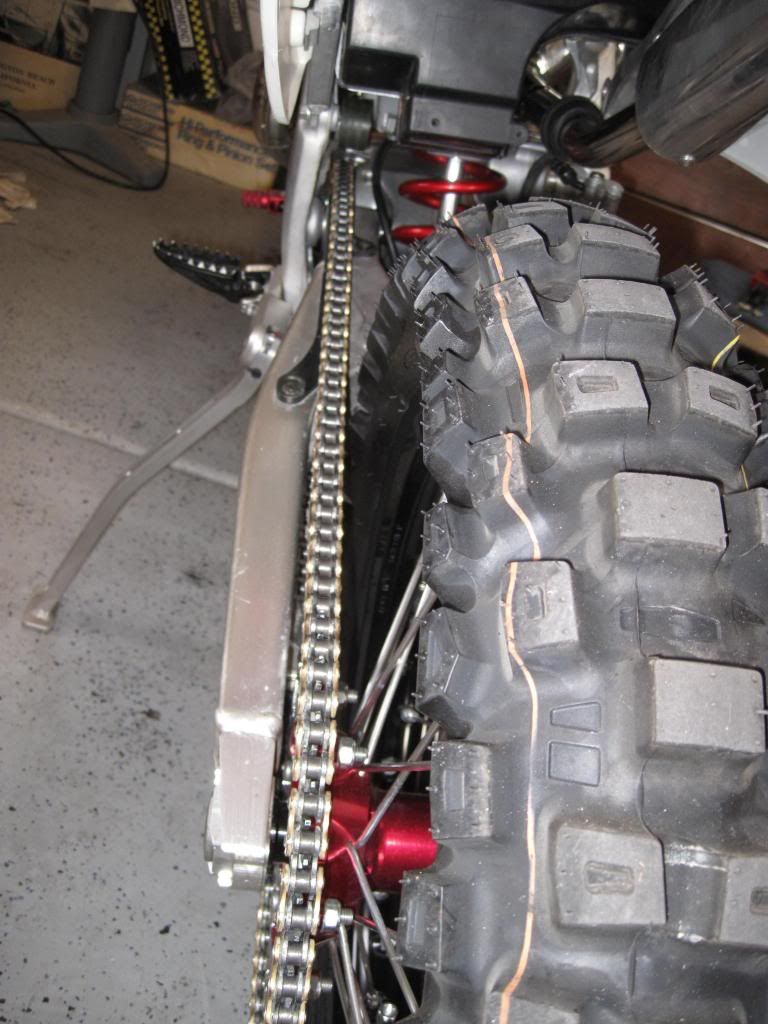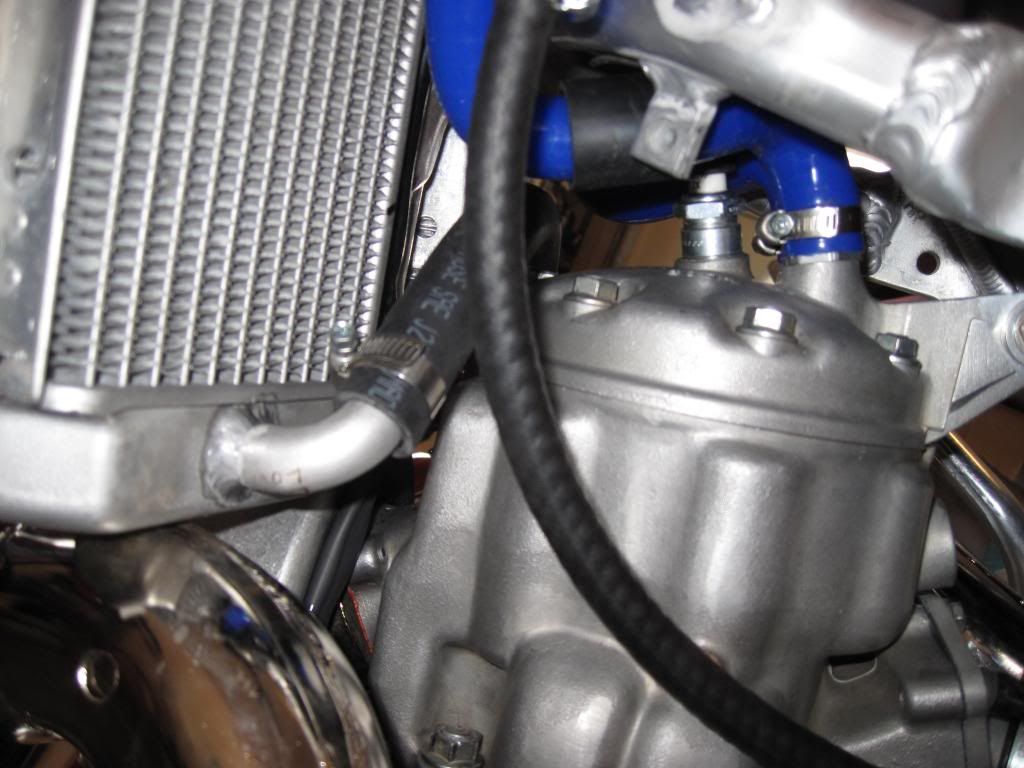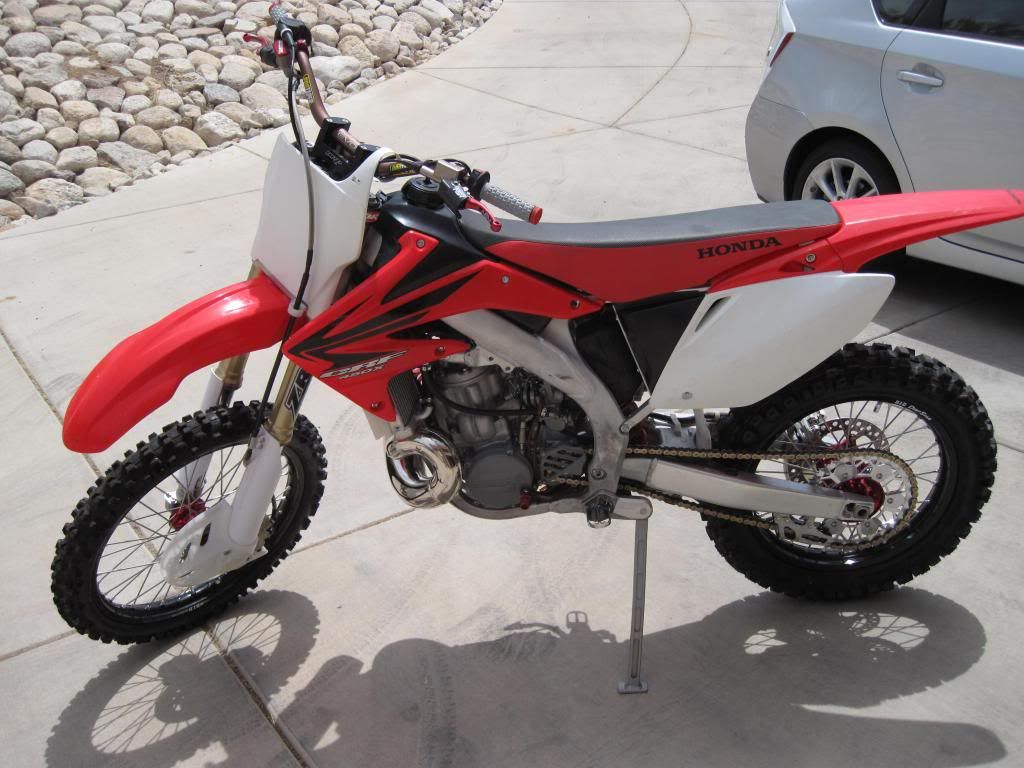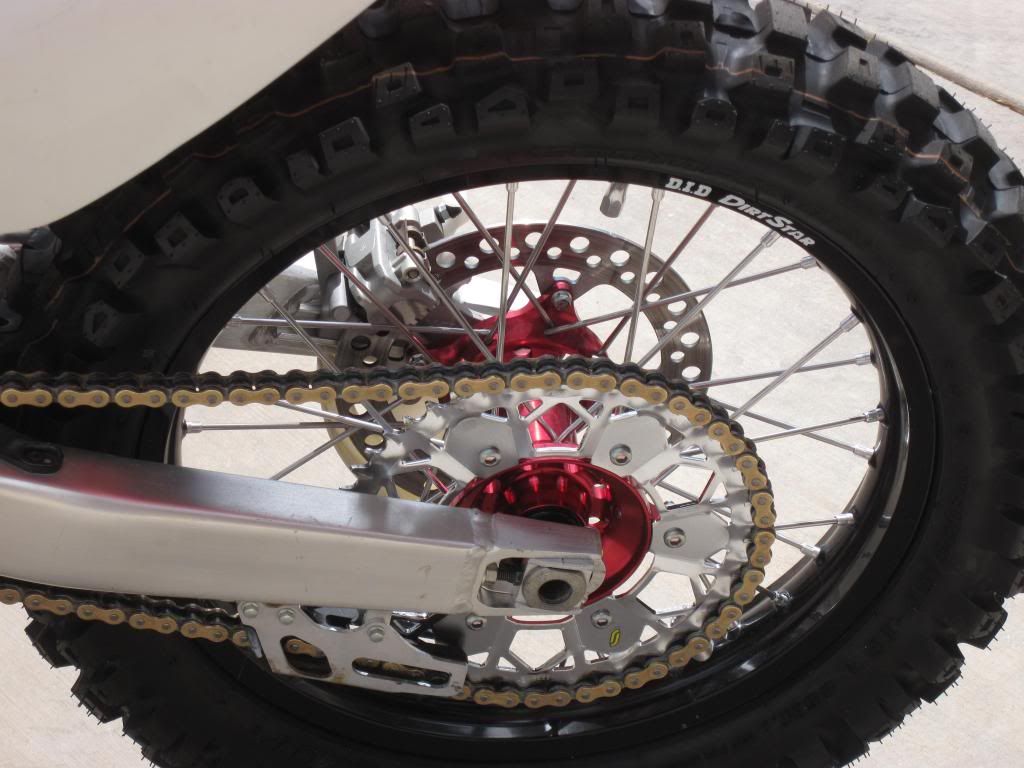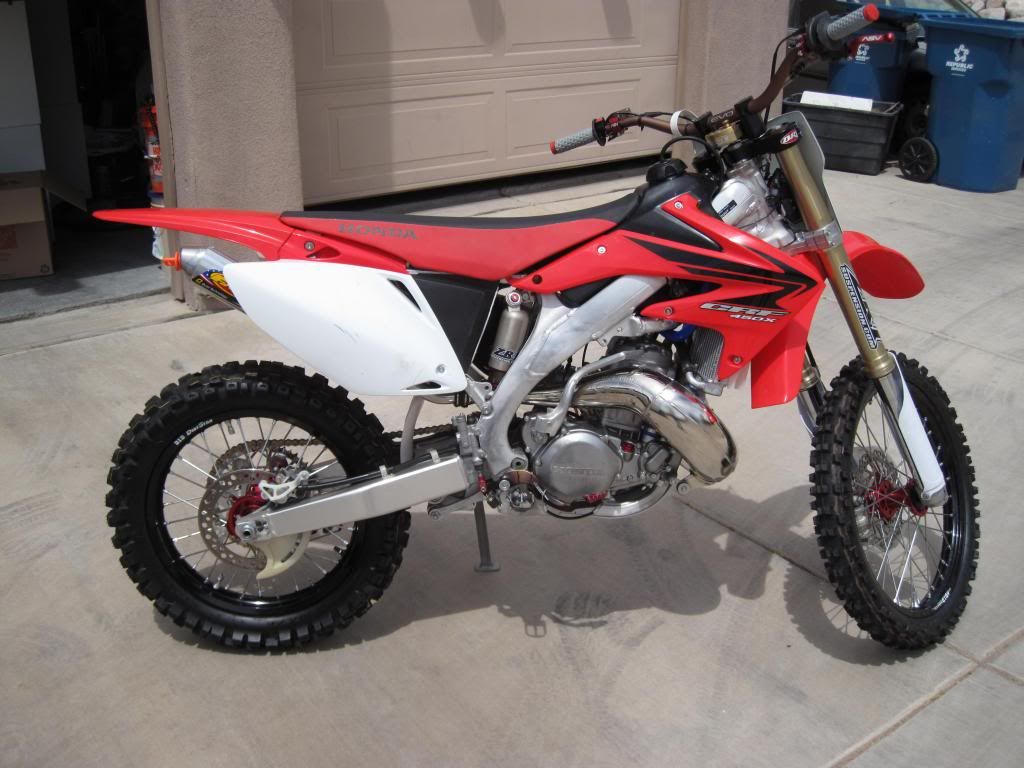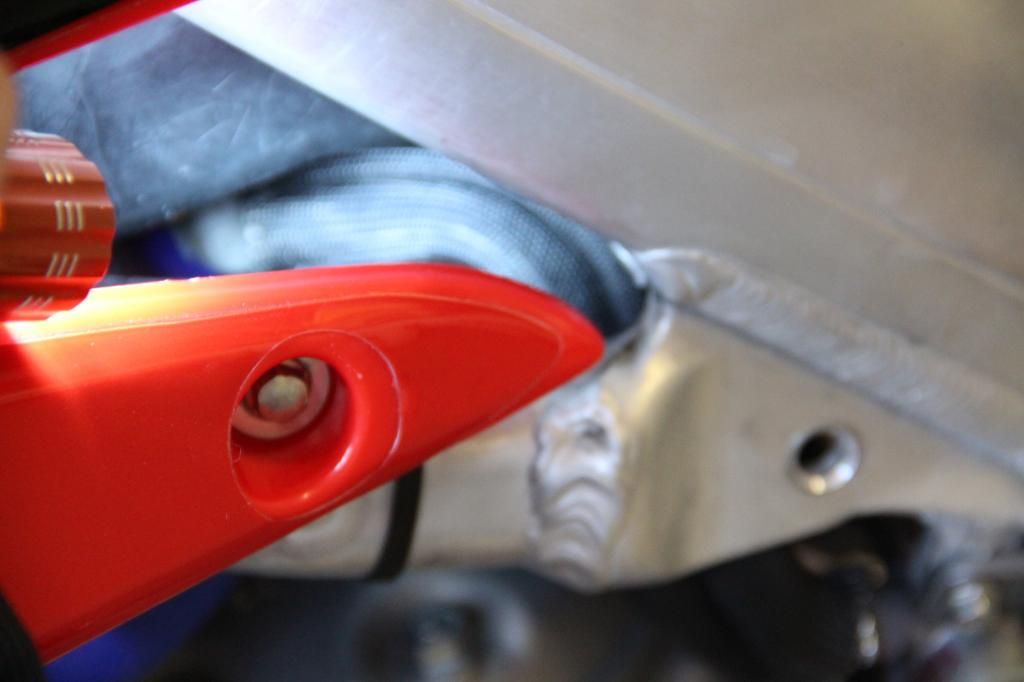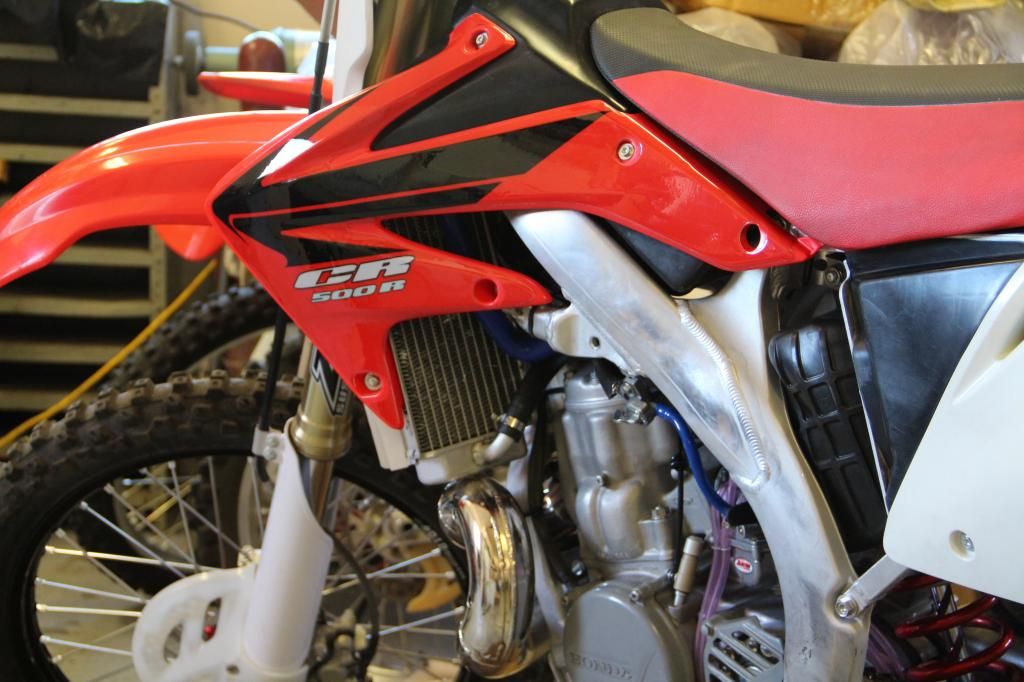More progress on the bike last weekend. I had so many parts when I got home it was like Christmas!
Earlier last week the machinist and I had a discussion with Wiseco about piston to wall clearance. The Wiseco spec for the Pro-Lite piston is .0025”. Most forged pistons are fitted in the .005-.007” range. It was difficult finding someone at Wiseco that could intelligently discuss this. They just say “Follow the directions”. We decided to open it up slightly to .003” as the difference must be in the new coated skirts.
My wife picked up the cylinder & piston from the machine shop for me so I was able to assemble the engine when I got home. Another strange anomaly. The Wiseco instructions have you drill two “oiling holes” in the piston where it contacts the exhaust port bridge. You have to mock up the piston in the bore and trace the exhaust bridge outline. Then mark the first hole .300” down from the bottom ring. My old piston had them, so I set it up in the drill press and drilled them. I thought it was odd that they were not pre-drilled.
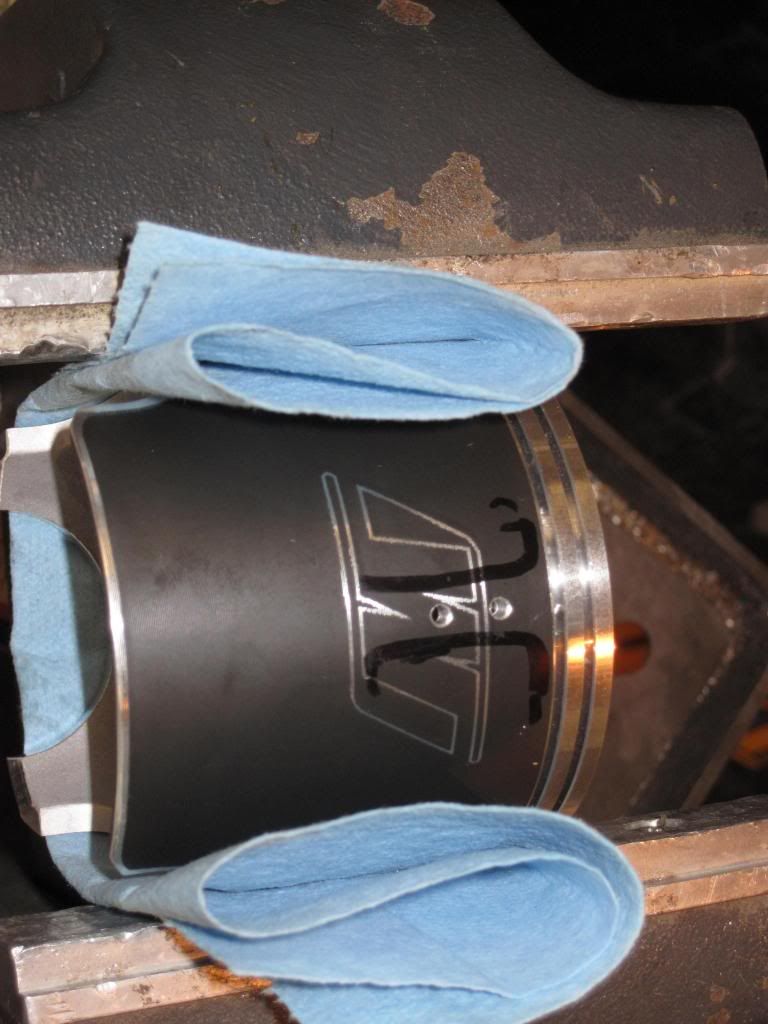
I had helped my son rebuild his new CRF250R earlier this year. The CR500 is so much easier! Everything is big and stout compared to the CRF250 and no valve train. The CR500 barrel goes down easily over the new piston and rings.
CR500 engine complete after top end rebuild.
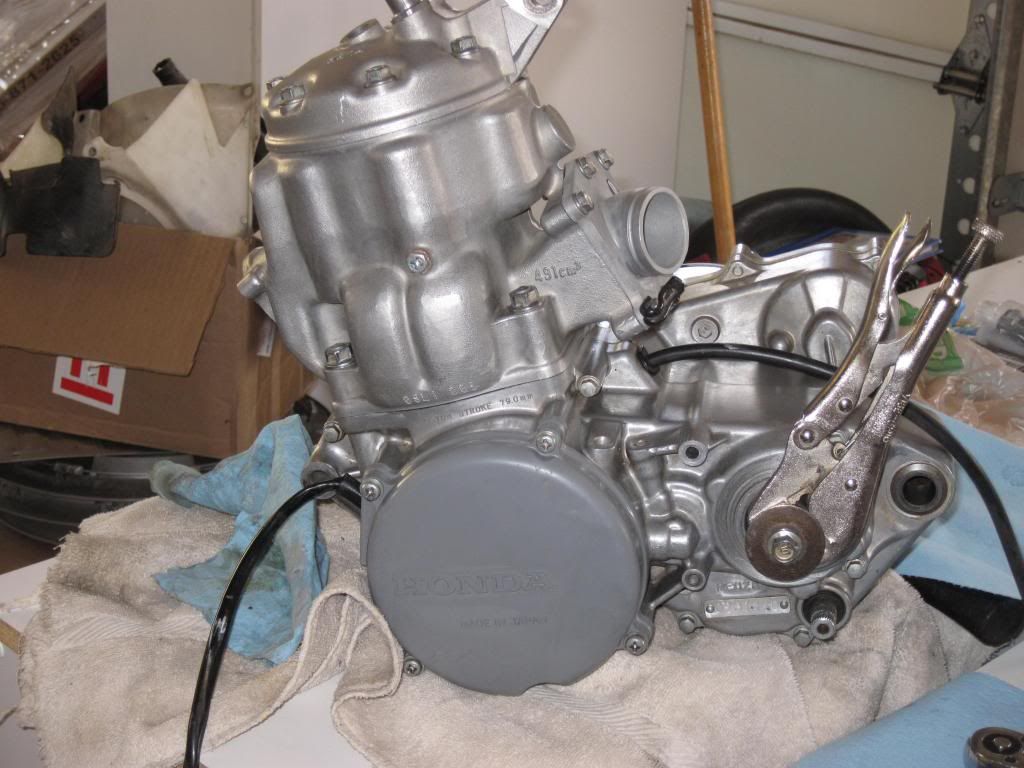
I also had the forks and shock reworked by Donny, our local retired RaceTech Pro. We are lucky to have him in Tucson. Last year we took my steel frame forks and shock to him and they are so good I almost didn’t start this project! He says these will be better.
Engine and forks installed in chassis.
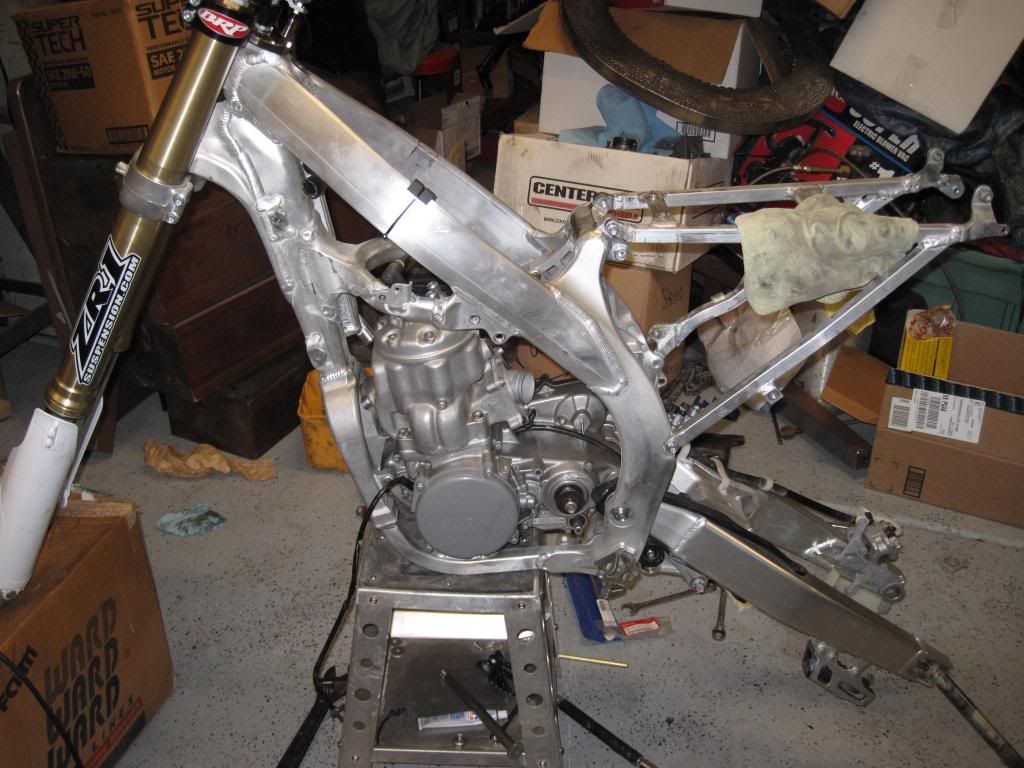
Air box, rear wheel, and fender installed.
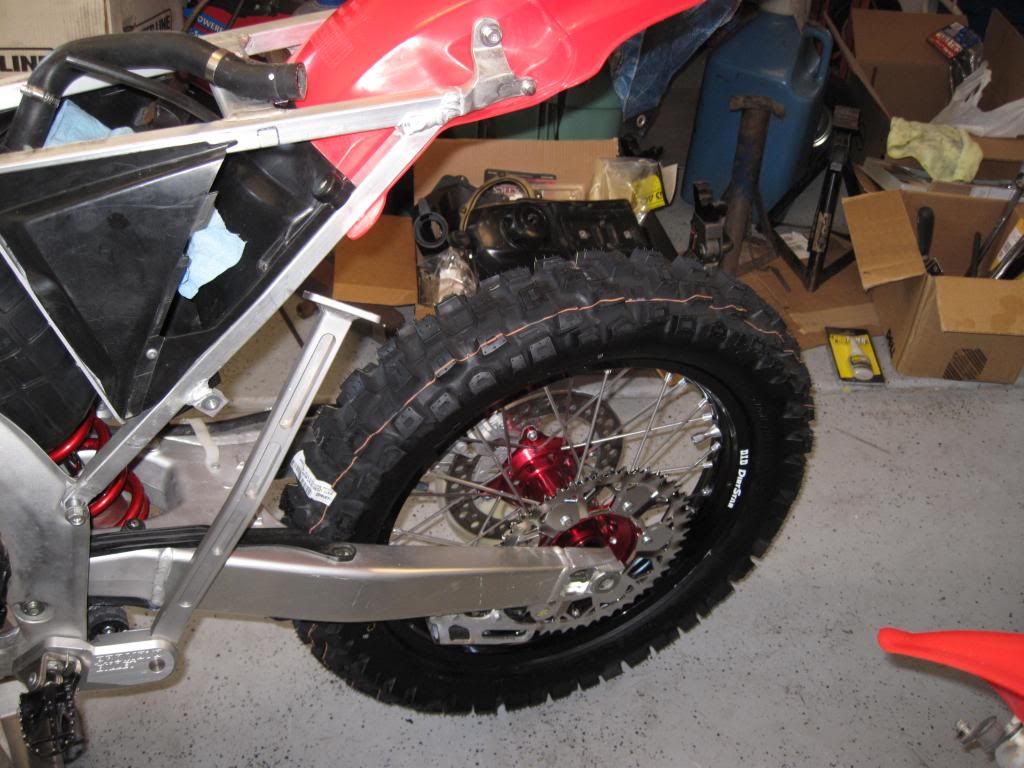
I didn’t realize the 450R brake lever wouldn’t fit. The CR500 clutch cover is about .300” wider than the CRF450R and the brake lever hits the cover. The CR500 brake lever has .300” wider pivot and longer pivot bolt, but the CR500 pivot bolt has a smaller thread than the 450 pivot bolt.
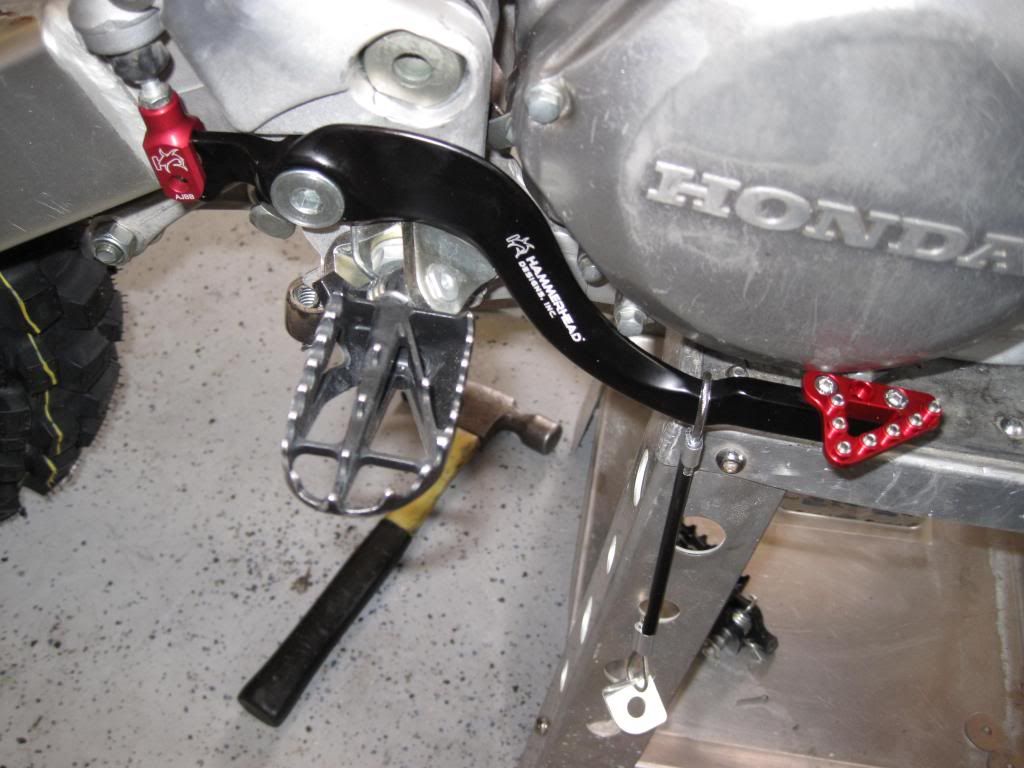
So I broke out the map torch and marked the lever, heated it up 1” from the pivot and bent it out 15 degrees and back in behind the toe piece.
Fits perfect now. Later I found out the 450X brake lever has more offset in it and should fit. Of course this was after I had taken a torch to my new lever!
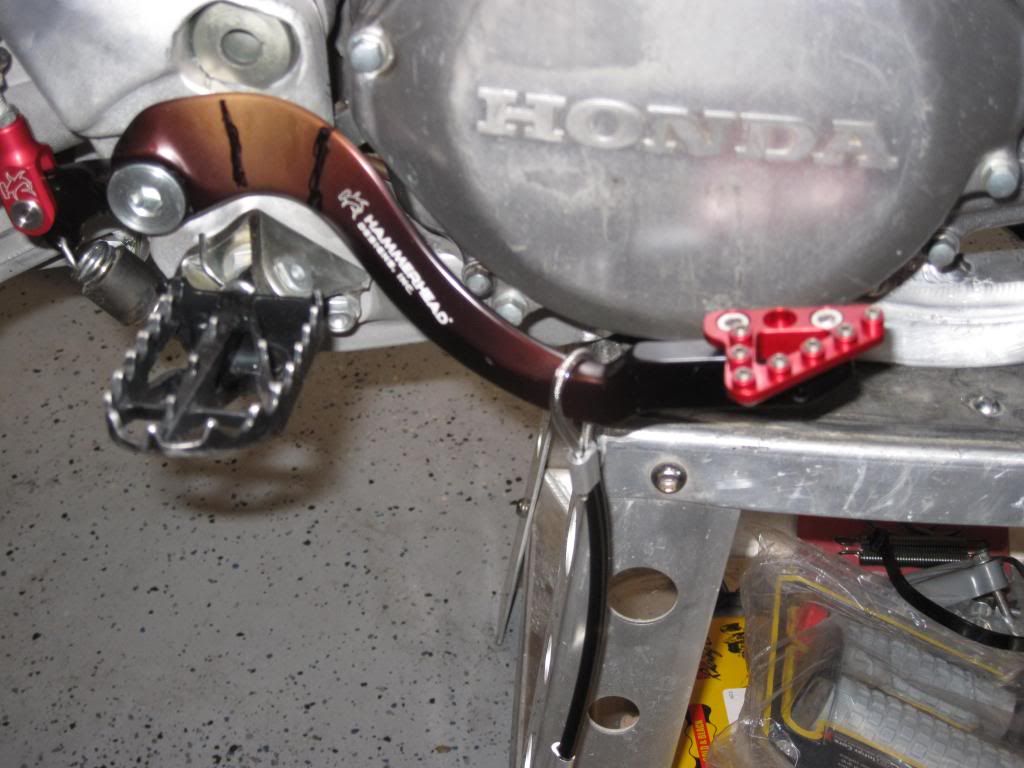
You can’t quite see it, but the bottom engine mount bolt is too short. The OEM CR500 bottom engine mount bolt is 130mm long and the extra thickness of the aluminum mounts makes it a little short. The 2007 CR250 aluminum frame bolt is 138mm long and works perfect.
CRF450X fuel tank and reserve petcock installed. In this picture, the petcock is actually mounted in the wrong position. It actually goes in the hole just below.
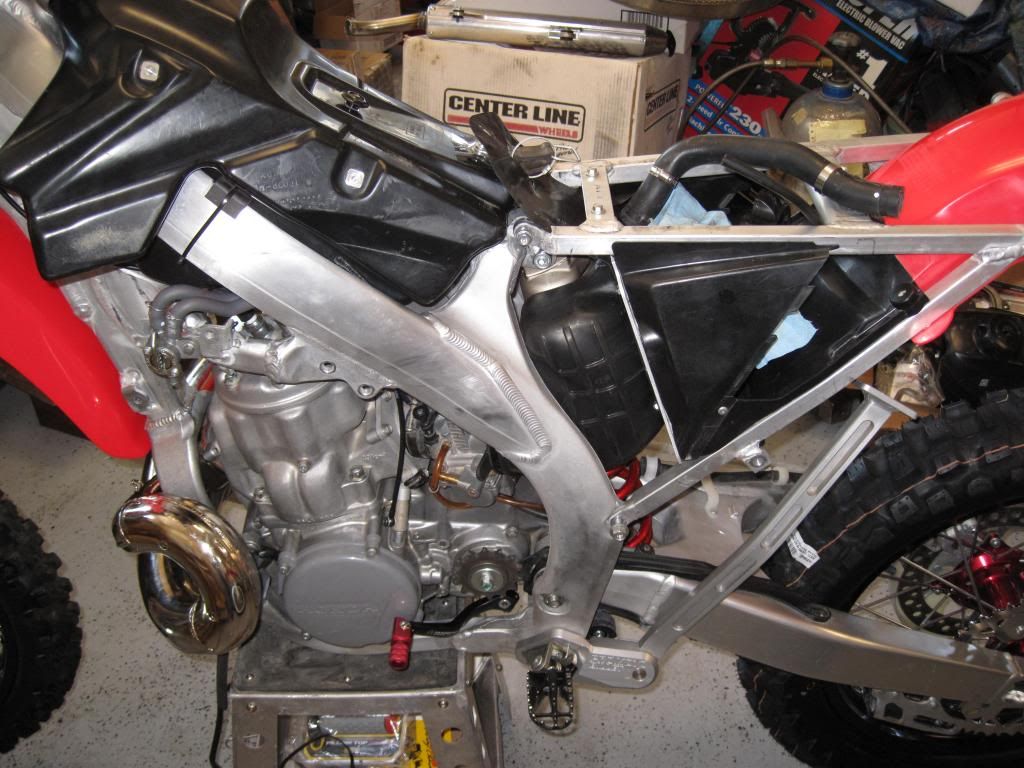
I also used 450X fuel lines. The 450X petcock fits the 450R frame, but it’s turned 90 degrees.
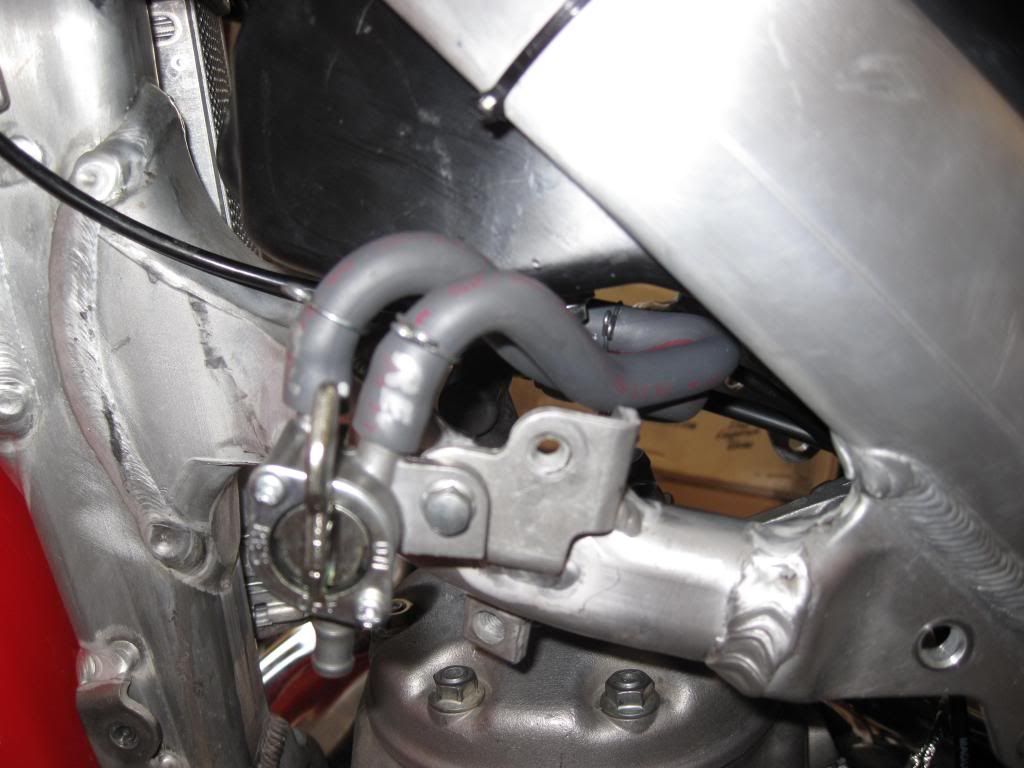
I was concerned about spark plug clearance, but all I did was turn the fuel strainer around backwards so the fuel line exits rearward and it clears. The 450R tank will also clear using the same method. There is actually more clearance in the CRF450 chassis than there was in my steel 500 with a Clark tank.

The aftermarket shifter was difficult to install. The bolt must go in after it’s installed onto the shaft (the bolt fits through a groove in the shaft). The frame rail is just below the shifter and the aftermarket shifter came with a very long bolt. I thought I was going to have to remove the engine to get it on. I tried the OEM CR500 shifter and it has a shorter bolt and I was able to get it on. I used the OEM shifter bolt on the aftermarket lever and was able to get it in while rocking the shifter upward like shifting up to the next gear, but it’s extremely close. (This is a CR250 lever).
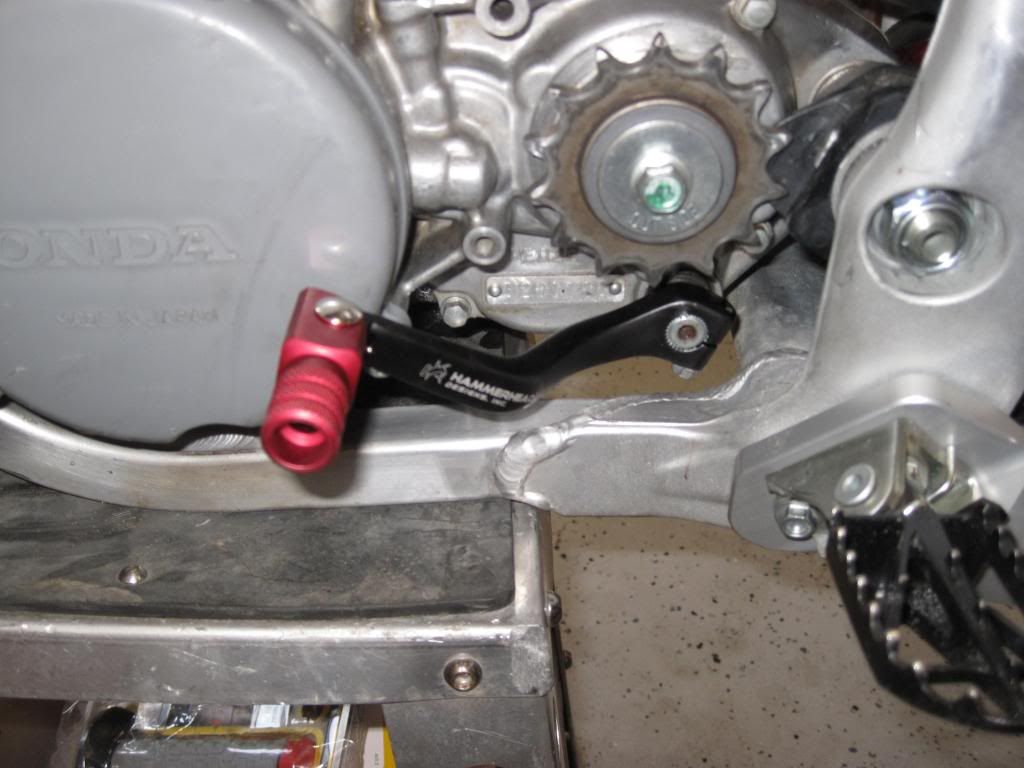
The carb fits perfect using the 98-99 CR250 air boot. I also installed new Boyesen Pro Series reeds in the Rad Valve.
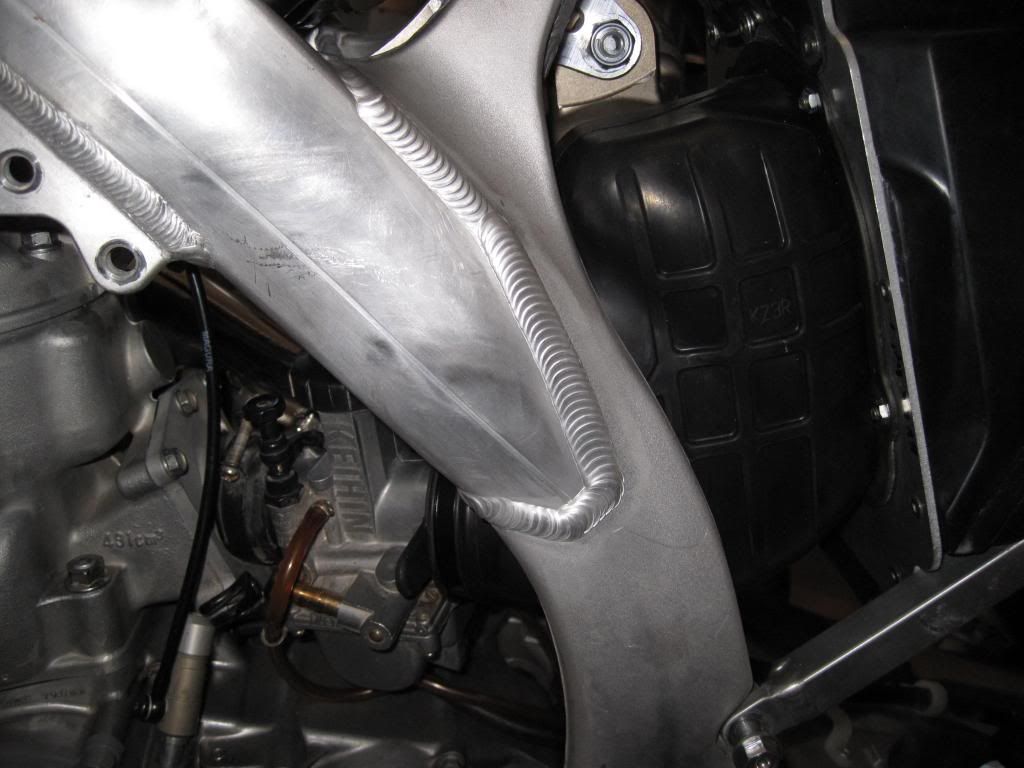
CR500 CDI installed in stock CRF450 location behind the front number plate. I used the OEM 450 rubber mount.
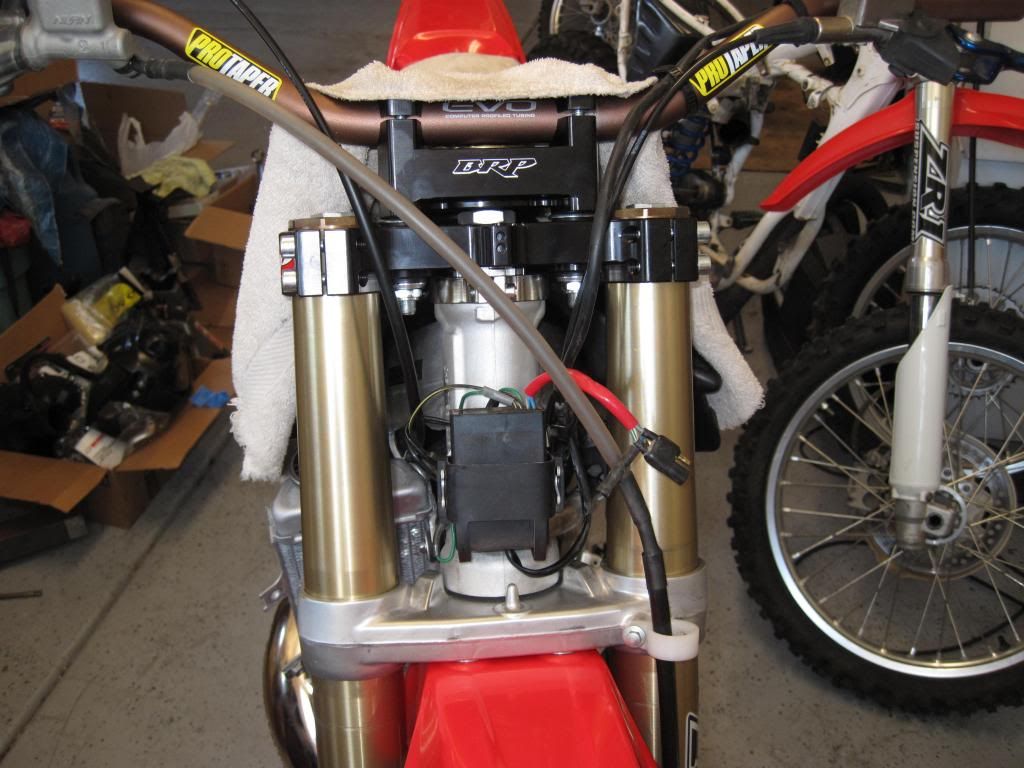
Scott’s stabilizer, Magura clutch, and Pro Taper handle bars installed. I also rebuilt the throttle with a new tube, new wheel, and new cable. I was going to use a Motion Pro throttle, but I wanted to stay with the same ratio. Then I found out a new OEM CR500 throttle cable is only $14 online, so I stayed with the original throttle.
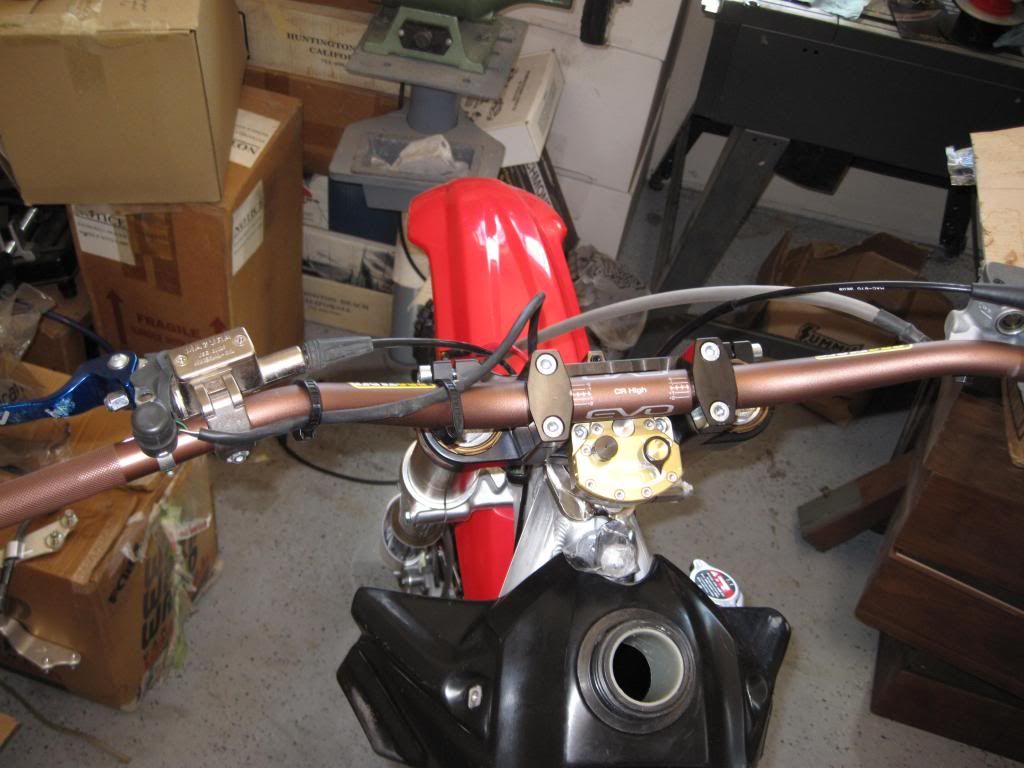
My radiator hoses are still on backorder at Motohose. Anyone know how to speed Steven up?
My levers are still on backorder at ASV. Anyone know how to speed Arvin up?
I’m working on making a wire loom extension this week. Adam is right about the CR500 wiring. The bullet connectors are 3.5mm and are unique to Japan. SAE bullet connectors do not fit.
Next week I need to install the chain, grips, new Rad Valve collar (it just never arrived), left radiator, wire extensions, fuel line from petcock to carb, several other odds and ends and finally plastic.
